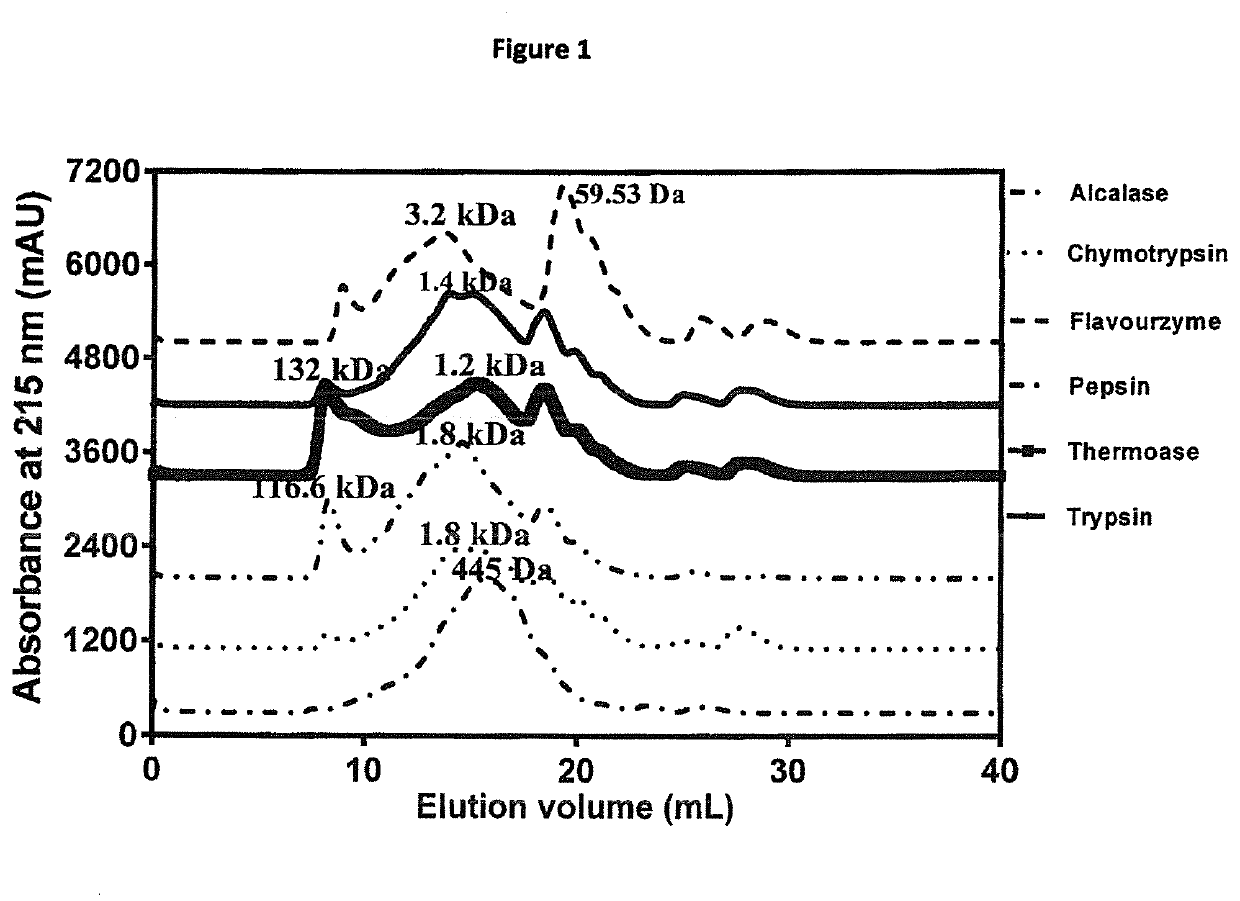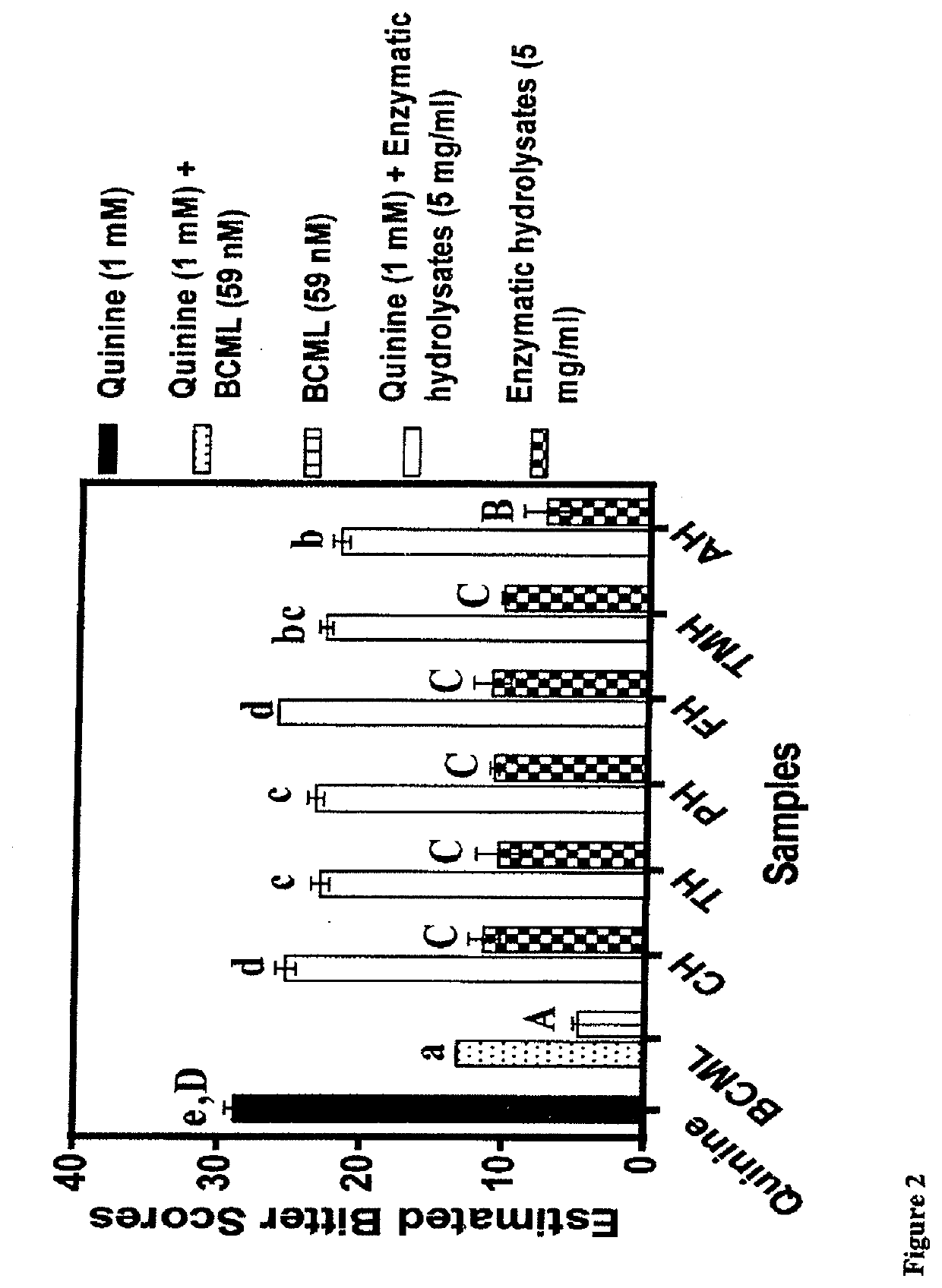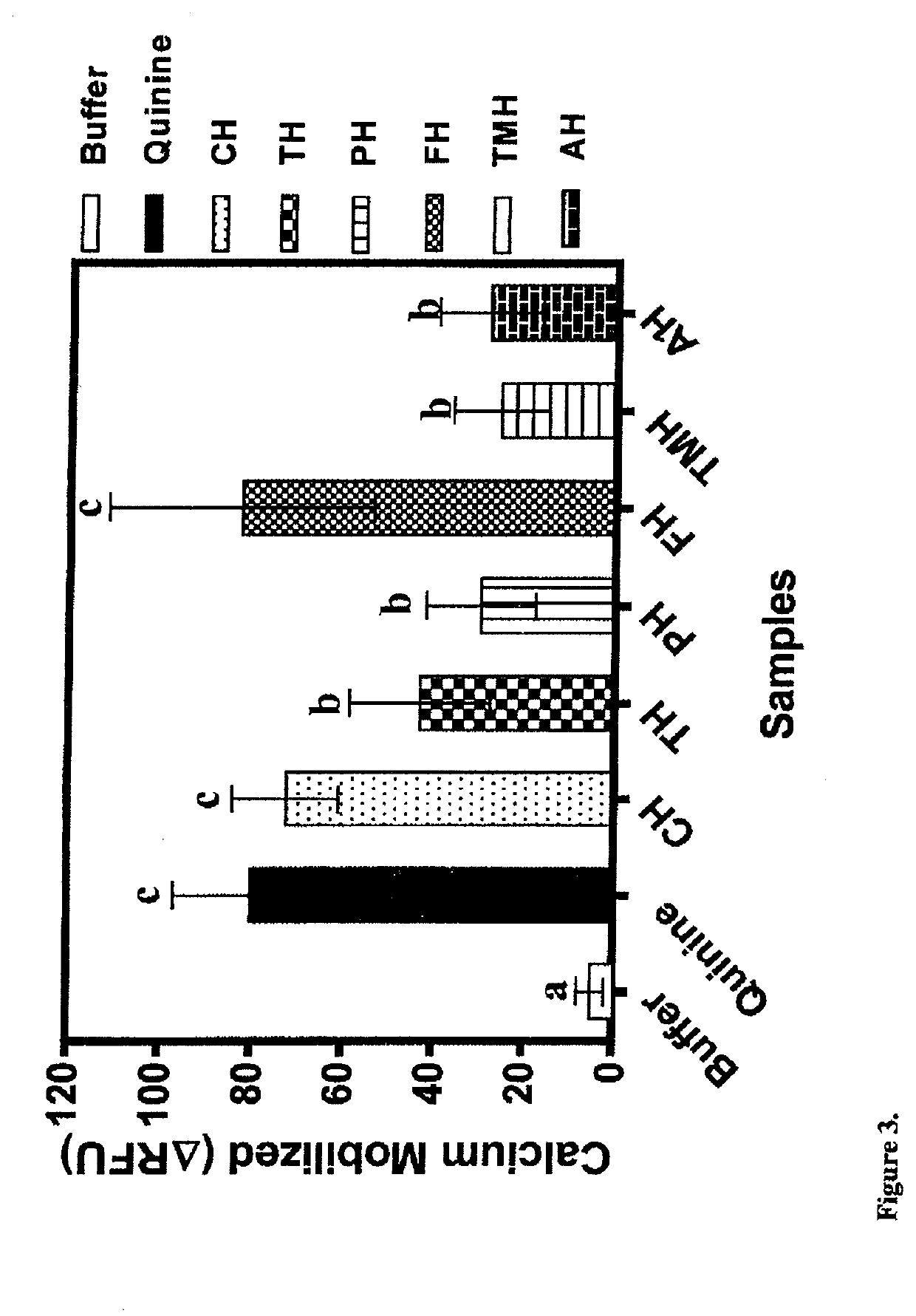Food Protein-Derived Peptides as Bitter Taste Blockers
a technology of food protein and peptide, which is applied in the field of food protein-derived peptide as bitter taste blockers, can solve the problems of limited information on the bitterness suppressing properties of food protein hydrolysates and their constituent peptide chains, and the slow progress towards production and utilization of new blockers
- Summary
- Abstract
- Description
- Claims
- Application Information
AI Technical Summary
Benefits of technology
Problems solved by technology
Method used
Image
Examples
example 1
[0093]As shown in Table 1, the degree of hydrolysis (DH) of the protein hydrolysates was enzyme-dependent with the highest values for the microbial enzymes alcalase and flavourzyme. The high DH for flavourzyme may have been due to the presence of endoproteases and exoproteases,32 which could have enhanced the rate of proteolysis. The results are similar to those previously reported for bovine plasma proteins where the flavourzyme hydrolysates had higher DH values than the alcalase hydrolysates.33 Similarly, a slightly higher DH for a peanut hydrolysate produced from flavourzyme when compared to that of alcalase after hydrolysis for 4 h was suggested. However, the results are different from those reported for tilapia muscle protein hydrolysis where the flavourzyme produced lower DH than alcalase.24 An interesting outcome is that the intestinal enzymes (trypsin and chymotrypsin) digested the meat proteins more efficiently and produced hydrolysates with higher DH than the sto...
example 2
d Composition
[0095]In comparison to the defatted beef protein, significant changes in some of the amino acids were observed after enzymatic hydrolysis (Table 2). Glutamic acid+glutamine (Glx) were the most abundant in the beef but there was no significant change in content after protein hydrolysis. In contrast, the contents of aspartic acid+asparagine (Asx) and arginine were significantly (p34 had previously shown that tryptophan is a T2R4 agonist and potentiator of bitterness intensity. Therefore, protein hydrolysates with lower tryptophan levels may provide a better source of weakly-acting T2R4 peptide agonists or even antagonists when compared to those with higher levels. With respect to amino acid groups, there were overall significant (p34 Therefore, the results reflect the different proteolytic specificities of the proteases used in this work, which provided a wide variation of peptides (different side groups) that could function as T2R4 antagonists.
example 3
ation Chromatography
[0096]Peptide size distribution indicates the presence of mostly peptides with the main peaks between 0.445-3.2 kDa (FIG. 1). Alcalase hydrolysate (AH) had the most uniform peptide distribution followed by chymotrypsin hydrolysate (CH) while the remaining hydrolysates had big peptide peaks with estimated MW of 116-132 kDa. Alcalase is an endopeptidase with a very high degree of proteolysis, which may have contributed to the almost normal distribution of low molecular peptides. However, unlike the other hydrolysates, the flavourzyme hydrolysate (FH) had a distinct big peak with ˜60 Da estimated MW, which most likely represents amino acids due to the presence of exopeptidase activity. Peptide size and amino acid composition play an important role in taste. This is because previous studies have reported that peptides of 0.36-2.10 kDa were primary contributors to bitterness of protein hydrolysates, because smaller peptides failed to achieve the particular conformatio...
PUM
| Property | Measurement | Unit |
|---|---|---|
| MW | aaaaa | aaaaa |
| MW | aaaaa | aaaaa |
| molecular weight | aaaaa | aaaaa |
Abstract
Description
Claims
Application Information
 Login to View More
Login to View More - R&D
- Intellectual Property
- Life Sciences
- Materials
- Tech Scout
- Unparalleled Data Quality
- Higher Quality Content
- 60% Fewer Hallucinations
Browse by: Latest US Patents, China's latest patents, Technical Efficacy Thesaurus, Application Domain, Technology Topic, Popular Technical Reports.
© 2025 PatSnap. All rights reserved.Legal|Privacy policy|Modern Slavery Act Transparency Statement|Sitemap|About US| Contact US: help@patsnap.com



